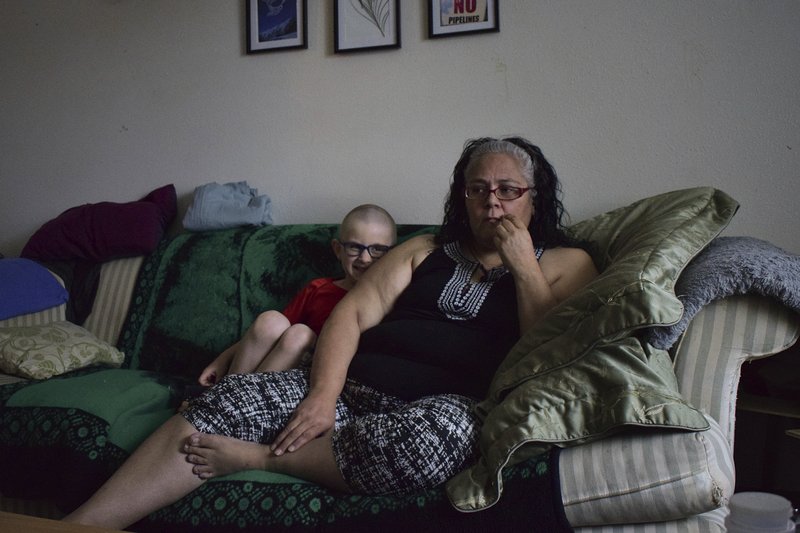MONTREAL -- Hundreds of thousands of Canadians have been unwittingly exposed to high levels of lead in their drinking water, with contamination in several cities consistently higher than they ever were in Flint, Mich., according to an investigation that tested drinking water in hundreds of homes and reviewed thousands more previously undisclosed results.
Residents in some homes in Montreal, a cosmopolitan city an hour north of the U.S.-Canada border, and Regina, in the flat western prairies, are among those drinking and cooking with tap water containing lead levels that exceed Canada's federal guidelines. The investigation found some schools and daycares had lead levels so high that researchers noted it could affect children's health. Exacerbating the problem, many water providers aren't testing at all.
It wasn't the Canadian government that exposed the scope of this public health concern.
A yearlong investigation by more than 120 journalists from nine universities and 10 media organizations, including The Associated Press and the Institute for Investigative Journalism at Concordia University in Montreal, collected test results that properly measure exposure to lead in 11 cities across Canada.
Out of 12,000 tests since 2014, one-third -- 33% -- exceeded the national safety guideline of 5 parts per billion; 18% exceeded the U.S. limit of 15 parts per billion.
In a country that touts its clean, natural turquoise lakes, sparkling springs and rushing rivers, there are no national mandates to test drinking water for lead. And even if agencies do take a sample, residents are rarely informed of contamination.
"I'm surprised," said Bruce Lanphear, a leading Canadian water safety researcher. "These are quite high given the kind of attention that has been given to Flint, Mich., as having such extreme problems."
Many Canadians who had allowed journalists to sample their water were troubled when they came back with potentially dangerous lead levels.
"It's a little bit disturbing to see that there's that much," said Andrew Keddie, a retired professor who assumed his water was clean after replacing pipes years ago at his home in Edmonton. What he couldn't do is replace public service lines delivering water to his house. After learning his water lead levels tested at 28 parts per billion, Keddie said he was "concerned enough that we won't be drinking and using this water."
Leona Peterson learned of the contamination in her water after journalists found excessively high lead levels in 21 of 25 homes tested in her small, northwest port town of Prince Rupert. Peterson, who lives in subsidized housing for Indigenous people, had water that registered at 15.6 parts per billion.
"I was drinking from the tap, directly from the tap, without any knowledge that there was lead in the water," said Peterson. Her son was as well.
Canadian officials where levels were high said they were aware that lead pipes can contaminate drinking water and that they were working to replace aging infrastructure.
Montreal Mayor Valerie Plante vowed to test 100,000 homes for lead and speed up replacement of lead-lined pipes immediately after journalists sent her an analysis of the city's internal data revealing high lead levels across the city.
The media consortium filed more than 700 Freedom of Information requests and took hundreds of samples in people's homes to assemble 79,000 water test results. But the findings are neither comprehensive nor an indication of overall drinking water quality in Canada. That doesn't exist.
"Because there is no federal oversight, everybody does what they want," said engineering professor Michele Prevost, who quit working on a government study of school drinking water in frustration over the lack of lead testing. "Most provinces ignore this very serious problem."
The government's approach to limiting lead in drinking water in Canada is starkly different from the U.S., where under federal law every person is supposed to receive an annual report from their water provider detailing lead test results.
In the U.S. however, even public water quality reports weren't enough to prevent the Flint, Mich., drinking water crisis, brought on by a 2014 decision to temporarily pull water from a river as a cost saver. But Flint's water problems went well beyond lead: excessive microbes led to a Legionnaires' disease outbreak that caused at least 12 deaths and sickened more than 90 people.
In Canada, where provinces -- not the federal government -- set water safety rules, the main source of lead in drinking water is antiquated pipes. At one government hearing, an expert estimated some 500,000 lead service lines are still delivering water to people in the country. Many cities are starting to replace them.
Several short-term solutions include having suppliers add anti-corrosives or altering water chemistry so it's less likely to leach lead from the insides of pipes.
Even low levels of lead exposure can affect a child's IQ and their ability to pay attention. Children who are younger than 7 and pregnant women are most at risk from lead exposure, which can damage the brain and kidneys.
A Section on 11/05/2019
